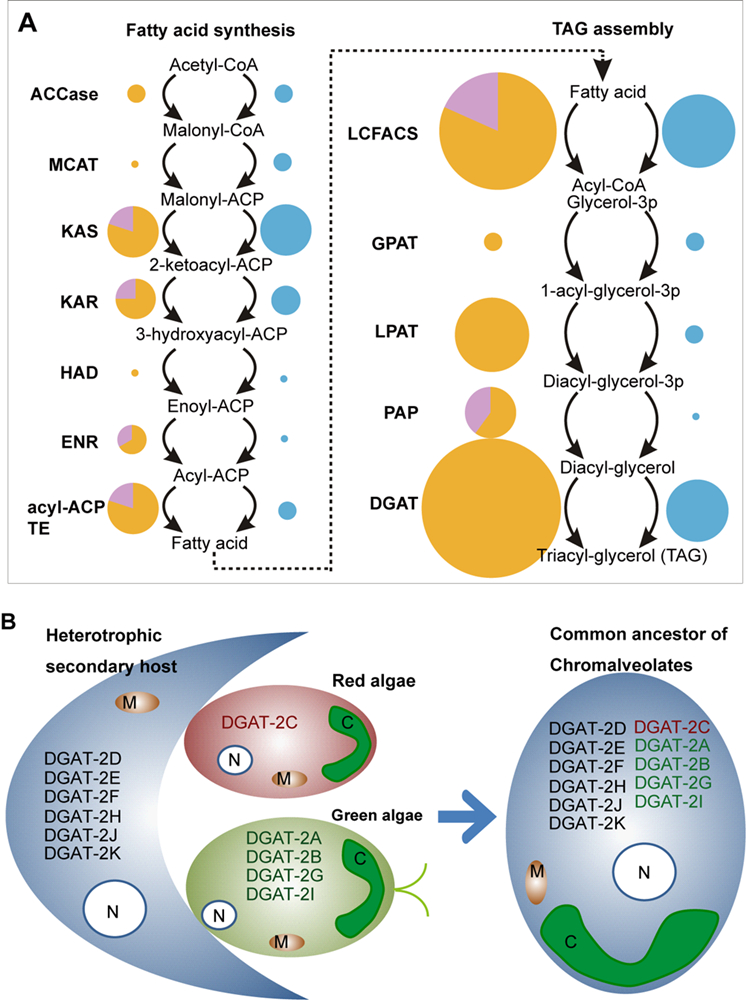Photosynthetic microalgae are ofinterest as potential feedstock for fuels because of their high yield of oil in cell, high growth rate, tolerance of diverse environmental conditions and capability to growon non-arable land using brackish water and wastewater. However, thegenetic and evolutionary mechanism of oil synthesis in microalgae remains elusive.

Fig.1 Dose expansion and evolutionary origin of genes involved in TAG biosynthesis in Nannochloropsis spp.
(Image by Single-Cell Center, QIBEBT, CAS)
Nannochloropsis spp. are a group of wild oleaginous microalgae that are widely distributed in the ocean and are cultivated world-wide. Drs. WANG Dongmei, NING Kang, LI Jing andtheir colleagues from Single-Cell Center of Qingdao Institute of Bioenergy and Bioprocess Technology, Chinese Academy of Sciences (QIBEBT), sequenced and compared six Nannochloropsis genomes. They found that the six genomes share keyoleaginoustraits, such as the gene dose expansion of selected lipid biosynthesis genes compared to green algae Chlamydomonas (Fig.1A).The most prominent example of gene dose expansion is Diacylglycerol acyltransferase (DGAT), which catalyzes the last step of triacylglycerol (TAG) synthesis. There’re 13 DGAT genes in Nannochloropsis, representing the highest gene dose in known genomes.
Through a comprehensive phylogenetic analysis, researchers proposed that among the 11 DGAT-2s, one gene might originate from the red algae related secondary endosymbiont, four from green algae related endosymbiont, and the other six from the eukaryotic host genome (Fig. 1B). In addition, a large proportion (15.3%) of TAG biosynthesis related genes were acquired by Nannochloropsis via horizontal gene transfer (HGT) from bacteria. Therefore, multiple genome pooling and horizontal genetic exchange, together with selective inheritance of lipid synthesis genes and species-specific gene loss, have led to the enormous genetic apparatus for oleaginousness and the wide genomic divergence among present-day Nannochloropsis spp.
This work was published online in PLoS Genetics. It was led by Prof. XU Jian from Single-Cell Center of Qingdao Institute of Bioenergy and Bioprocess Technology (QIBEBT). Prof. HU Qiang’s team from Arizona State University and Prof. Feng Chen's team from University of Maryland also participated in the study.